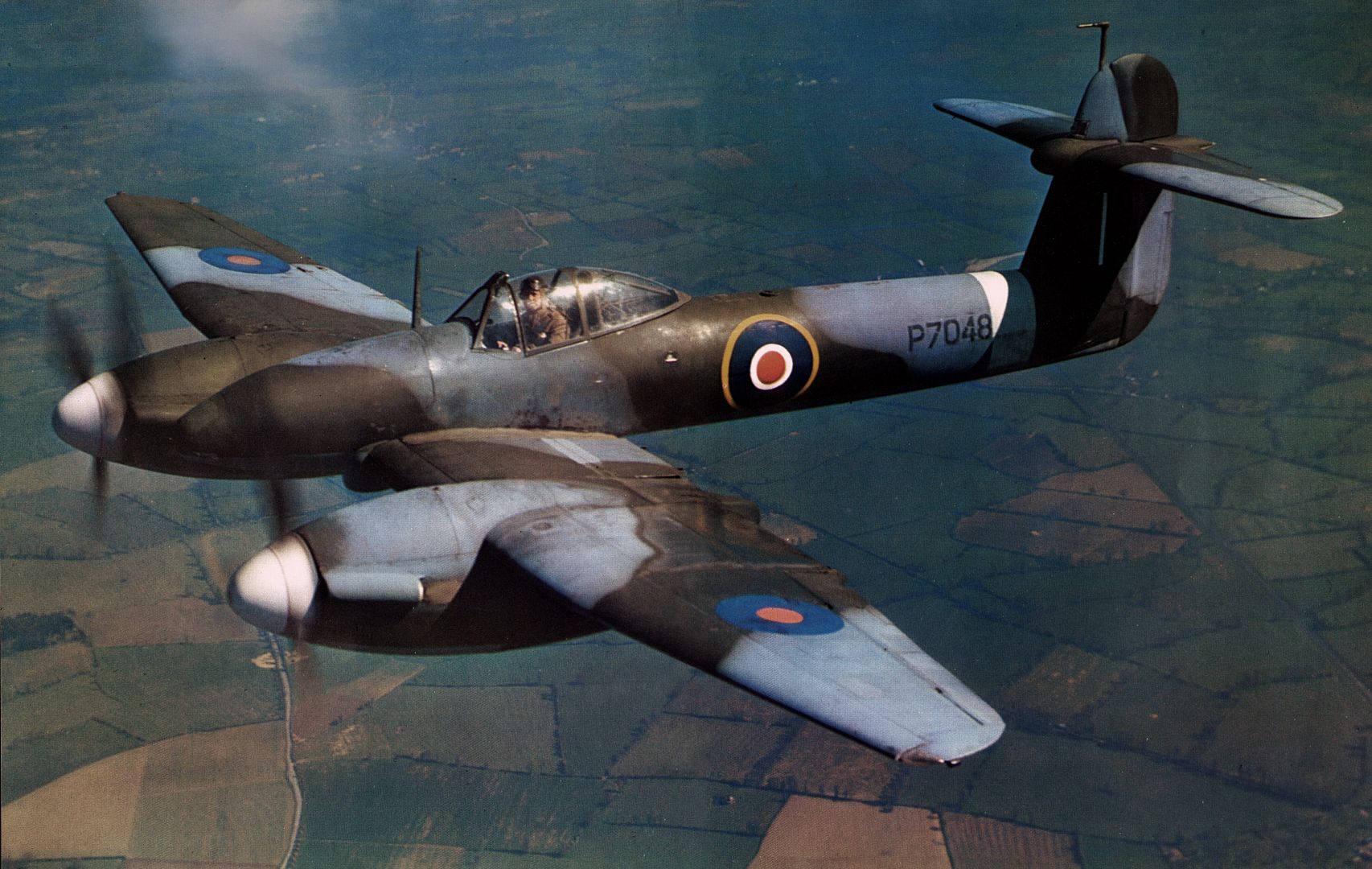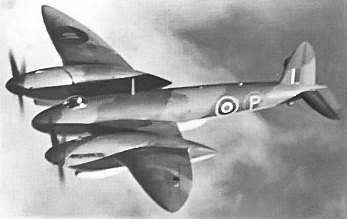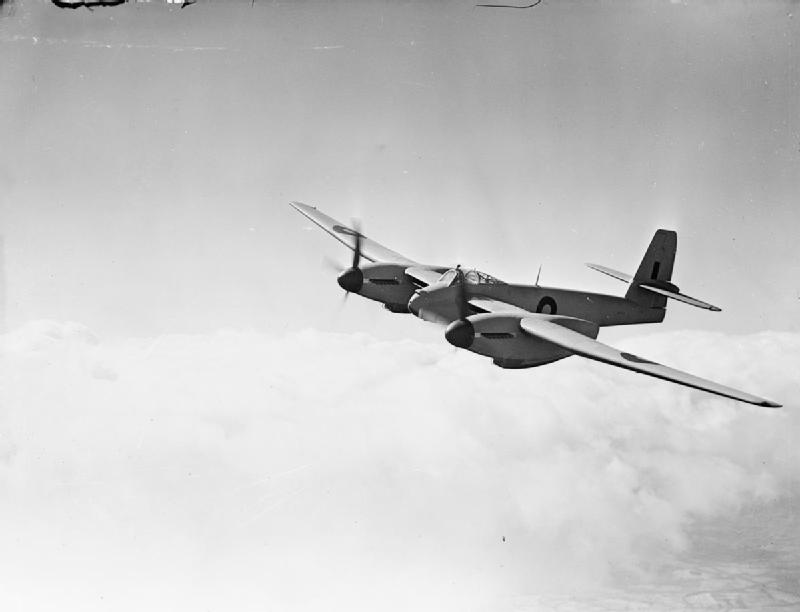... and if you want to invest in a cannon armed bomber destroyer, you really can't go wrong with this.



I think you'll find something similar in the novel The Third World War; August 1985 by Sir J. Hackett. Only it was Soviet Backfires armed with long ranged A2A missiles loose in the Reforger transport plane flights.
So I guess that means Dale Brown didn't come up with it first after all.
By the end of the war however, radar had become considerably smaller, small enough to be fitted in a heavy fighter. So we had the Heinkel He219 in Germany, the Twin Mustang in the US and the De Havilland Hornet in the UK.
You are still going to have a bigger gun to accomodate a larger barrel and a new ammunition feed system. According to wiki (I know, I know...) the B-20 came in at around 50 pounds and the comparable 20mm Hispano at on 43 pounds. The original 12.7mm Berezin UB weighed 47 pounds. I don't think that's a weapon the RAF are going to find easy to mount.

A comparison of 20mm and 12.7mm ammuniton.
End of the war?
The Bristol Beaufighter was using AI radar to find and kill Luftwaffe bombers in the winter of 1940/41, and the single engine Defiant was first equipped with AI Radar in 1941.
I'm afraid you got pounds and kilograms mixed up. The B-20 was 25 kg (13 kg lighter than M2 Browning) and the HS 404 43 kg, not 43 pounds. The B-20 fired a round with the same cartridge length as. 50 BMG but with a larger shell. The only downsides were low gun life and low muzzle velocity, but if you're treating the entire gun as a consumable and going after slow bombers those aren't problems.
... and if you want to invest in a cannon armed bomber destroyer, you really can't go wrong with this.

I'll bite, what's the story?
From the Smithsonian Air & Space emag:
"The War's (WW2) Oddest Dogfight"
A shootout over the Atlantic west of Portugal between a B-24D Liberator and two FW-200 Condors.
... and if you want to invest in a cannon armed bomber destroyer, you really can't go wrong with this.

The Whirlwind is wonderful whif- fodder, but it really does need alternate reality to live up to its potential, it was never a great interceptor, with engines that did not function well at altitude, small fuel tanks not cross connected, it was already a quart in a pint pot with little further room for growth- a great fighter- bomber, but with the poor altitude performance of the Peregrines in no way qualified as an interceptor.
If the aircraft progress a little faster, more priority and funding, you could end up with a couple of years of the second world war where very high altitude, stratospheric bombing becomes common, and single engine fighters simply can't get to that altitude with enough performance margin left to fight; even the mediums converted to night fighters might not be up for it, and there we are in the realm of bomber repurposed as interceptor.


